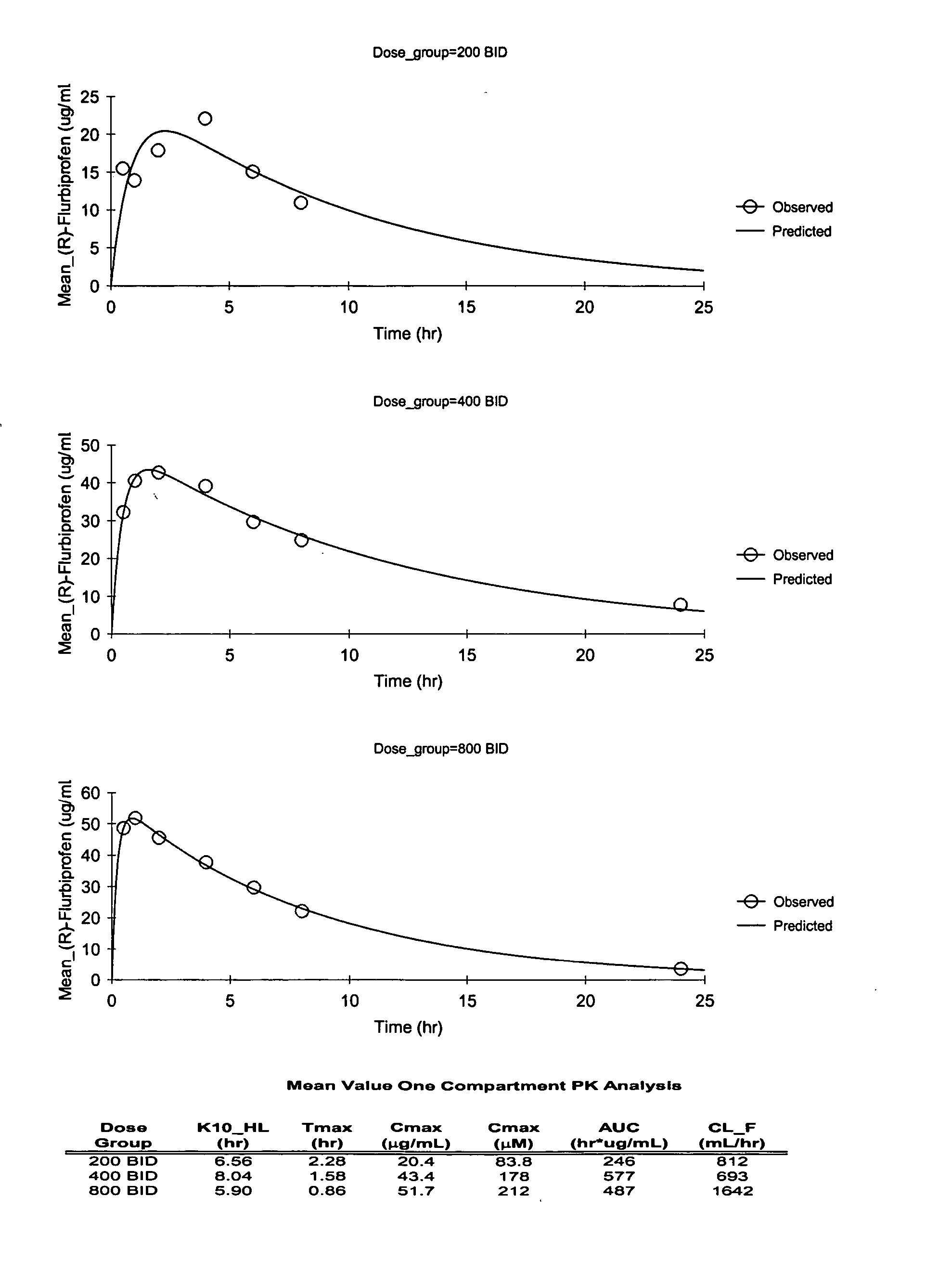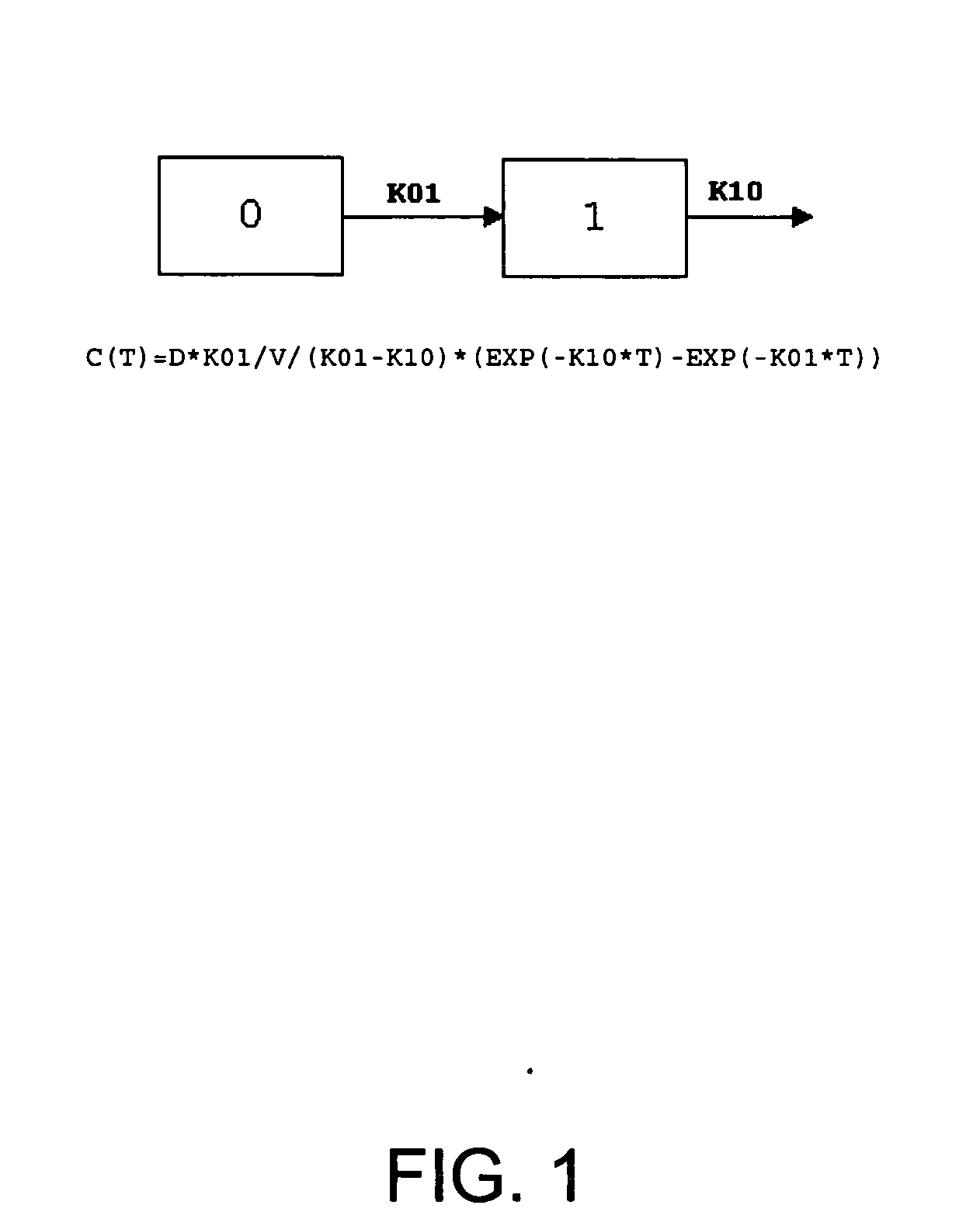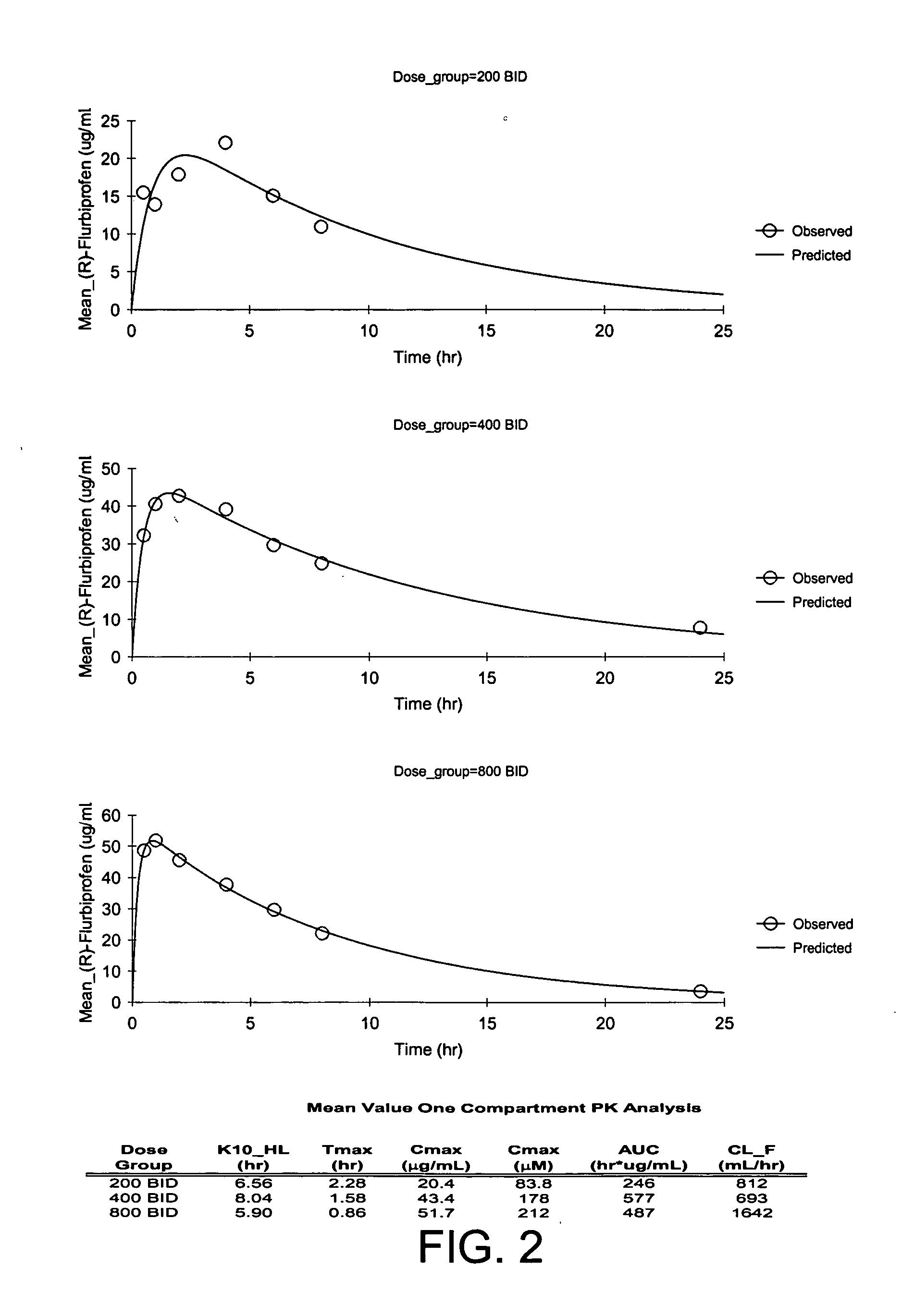Pharmaceutical methods, dosing regimes and dosage forms for the treatment of Alzheimer's disease
a technology for alzheimer's disease and pharmaceutical methods, applied in the direction of biocide, anhydride/acid/halide active ingredients, drug compositions, etc., can solve the problems of brain disorder serious affecting the ability of people no cure, and inability to carry out normal daily activities. to achieve the effect of improving or lessening the rate of declin
- Summary
- Abstract
- Description
- Claims
- Application Information
AI Technical Summary
Benefits of technology
Problems solved by technology
Method used
Image
Examples
example 1
6.1 Example 1
R-Flurbiprofen Containing Tablets
IngredientAmountPreferred RangesR-Flurbiprofen400 mg+20% to −20%Microcrystalline Cellulose392 mg+20% to −20%Colloidal Silicon Dioxide 4 mg+50% to −50%Magnesium Stearate 4 mg+50% to −50%
The tablets are prepared using art known procedures.
example 2
6.2 Example 2
R-Flurbiprofen Containing Coated Tablets
IngredientAmountPreferred RangesR-Flurbiprofen400 mg+20% to −20%Microcrystalline Cellulose392 mg+20% to −20%Colloidal Silicon Dioxide 4 mg+50% to −50%Magnesium Stearate 4 mg+50% to −50%Coated withLactose monohydrateHydroxyl propyl methylcelluloseTitanium dioxideTracetin / glycerol triacetateIron oxide
The coated tablets are produced using art known procedures.
example 3
6.3 Example 3
R-Flurbiprofen Capsules
IngredientAmountPreferred RangesR-Flurbiprofen400 mg+20% to −20%Microcrystalline Cellulose392 mg+20% to −20%Colloidal Silicon Dioxide 4 mg+50% to −50%Magnesium Stearate 4 mg+50% to −50%Encapsulated in gelatin
The capsules are produced using art known procedures.
PUM
| Property | Measurement | Unit |
|---|---|---|
| weight | aaaaa | aaaaa |
| weight | aaaaa | aaaaa |
| concentration | aaaaa | aaaaa |
Abstract
Description
Claims
Application Information
 Login to View More
Login to View More - R&D
- Intellectual Property
- Life Sciences
- Materials
- Tech Scout
- Unparalleled Data Quality
- Higher Quality Content
- 60% Fewer Hallucinations
Browse by: Latest US Patents, China's latest patents, Technical Efficacy Thesaurus, Application Domain, Technology Topic, Popular Technical Reports.
© 2025 PatSnap. All rights reserved.Legal|Privacy policy|Modern Slavery Act Transparency Statement|Sitemap|About US| Contact US: help@patsnap.com



